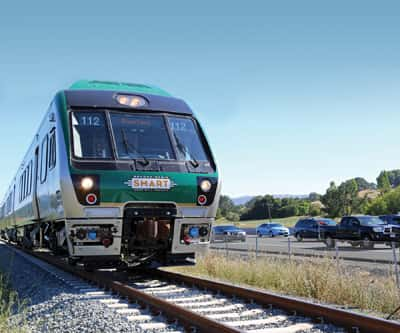Solar energy is no longer a science fair project. Today, strained operating budgets, environmental consciousness, better financing options and improved technology have come together in a way that’s bolstered California schools’ efforts to convert to solar energy for their electricity needs. In short, solar has become a viable energy source on school campuses throughout the state, providing long-term benefits for budgets and the environment, as well as teaching opportunities.
Schools are large consumers of energy, especially with the increased use of electricity-based technology. The California Department of Education estimates California schools spend about $132 per student per year in energy costs—more than is spent on school supplies and books. So, not only is renewable solar electricity a good long-term investment, but it also frees up schools’ resources to be spent on teaching tools and activities.
Schools understand it’s a great time to go solar: the price of photovoltaic panels, the cost of installation of the systems and interest rates on federal and state bonds have all come down in recent years. These three conditions together are essential to the schools’ ability to go solar. The diverse financial and installation options now available let schools find the solar solution that fits their particular needs. In 2009 and 2010, $700 million was allocated to California schools through Qualified School Construction Bonds (a branch of the U.S. Deptartment of Education). The jobs bill passed in February 2010 by the U.S. Senate has also improved the attractiveness of bonds to both schools and bond buyers. By taking advantage of these opportunities, school districts can start saving money immediately and will continue to do so for decades to come. Most solar panels have a 30-year life span, and it’s estimated that most systems will pay for themselves in less than 12 years. The cost efficiencies are obvious.
Going solar also provides a valuable educational opportunity. Panels installed on rooftops, parking structures or ground mounts can become part of the classroom. Students can experience first-hand the practical benefits of their solar electric system in action. They can directly witness how science is positively impacting the environment and feel proud to be part of a school community that’s reducing greenhouse gas emissions. Student curricula can be adjusted to take advantage of the onsite science and math lessons the systems provide, including a monitoring station where students can observe energy use and production in real time.
As communities increasingly demand renewable energy and participate with school boards in securing bonds to finance such projects, they become part of the solution. By creating the reality of renewable energy on school campuses, school administrators, teachers and parents are all demonstrating to their children how choosing sustainability benefits the well-being of the planet. At the same time, they provide a valuable lesson in how renewable energy relates to smart economics.
One Sun, Inc. is currently providing solar installations for 14 schools across Sonoma County. Already underway is a 134 kW system at Twin Hills and Apple Blossom Schools in Sebastopol. In collaboration with architect Alexis Persinger, One Sun has created a multifaceted system comprised of custom carport structures that will accommodate solar PV panels and provide vehicle charging stations.
According to School Superintendent Les Crawford, the Twin Hills Union School District Board of Trustees first became interested in solar projects when federal incentives became available. With fund-raising advice from Persinger Associates, the school district applied for and was approved for a CREBS (Clean Renewable Energy Bonds, available through the American Recovery and Reinvestment Act of 2009) loan. In addition, local voters approved a bond measure to help repay the loan. “There was great support for solar projects and…the bond measure was approved in November 2010. When the projects are completed, the district will have an energy cost savings of approximately $80,000 per year.” A PG&E rebate will also help with maintenance costs.
The Sonoma Valley Unified School District has also contracted to convert a total of 11 schools to solar energy. Over the summer of 2011, One Sun will install more than 2 million watts of solar pV systems on a range of roof and ground mounts at these sites.
Converting to solar energy can ease financial pressure on schools and reduce operating expenses for the long term. In addition, thousands of tons of CO2 will be eliminated from the atmosphere, and students will gain increased awareness of the benefits of sustainability. The community as a whole also profits from onsite local jobs and, with federal funds involved, manufacturing jobs at factories that produce American-made solar modules.
One Sun is proud to be part of this renewable energy transformation and is committed to helping schools reach their goals through solar PV energy systems. We bring our wide range of experience in commercial and public works solar energy systems to the table in undertaking school projects.
Warren Brown is founder and president of One Sun, Inc., a leading North Bay solar PV systems provider committed to helping businesses and public entities integrate solar electric energy into their everyday operations and increase their bottom line. You can reach him at warren@onesuninc.com.



